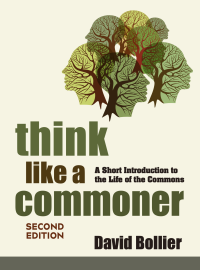Applying Ostrom's Guidelines to the Design of Software Platforms
Our knowledge about what makes digital commons work is terribly under-theorized. Yes, there are famous works by Lawrence Lessig and Yochai Benkler, and there are lots of projects and websites that are based on commoning such as like Wikipedia, free software, Arduino, open access journals, among countless others. But can we identify core principles for organizing digital commons? Can we use that knowledge to engineer the evolution of new commons? Identifying such principles just might let us move beyond “openness” as the ultimate goal of online life, to a more sustainable goal, the self-governed commons.
It has been a pleasure to discover that some computer scientists are actively exploring how Elinor Ostrom’s principles for successful commons might be applied to the design of software. Consider this intriguing essay title: "Axiomatization of Socio-Economic Principles for Self-Organizing Institutions: Concepts, Experiments and Challenges,“ which appeared in the ACM Transactions on Autonomous and Adaptive Systems, in December 2012.
The piece is by British electrical and electronic engineer Jeremy Pitt and two co-authors, Julia Schaumeier and Alexander Artikis. The abstract is here. Unfortunately, the full article is behind a paywall, consigning it to a narrow readership. I shall quote from the abstract here because it hints at the general thinking of tech experts who realize that the social and the technical must be artfully blended:
We address the problem of engineering self-organising electronic institutions for resource allocation in open, embedded and resource-constrained systems. In such systems, there is decentralised control, competition for resources and an expectation of both intentional and unintentional errors. The ‘optimal’ distribution of resources is then less important than the sustainability of the distribution mechanism, in terms of endurance and fairness, based on collective decision-making and tolerance of unintentional errors. In these circumstances, we propose to model resource allocation as a common-pool resource management problem, and develop a formal characterization of Elinor Ostrom’s socio-economic principles for enduring institutions.












Recent comments